Instagram Marketing Strategies for eCommerce
Instagram has quickly become one of the most popular social media platforms in the world. As the social media site has grown in popularity and its user base, it has evolved into an opportunity for brands and businesses to expand their marketing strategy.
In fact, Instagram marketing for eCommerce has now become one of the most salient strategies for any brand. With its sale to Facebook in 2012 the photo sharing application became a hugely important opportunity for eCommerce marketers. By now, if you don’t have an Instagram eCommerce marketing strategy then you could be really underperforming.
Instagram is now at the forefront of social media marketing, now solidifying its spot as one of the largest social sites in the world and as one of the best social media sites for marketing.
The social giant boasts 1 billion monthly users, with as many as 500 million people using their Instagram stories every day – one of the features available for eCommerce marketing. 100+ Million photos and videos are uploaded daily. The implication for worldwide digital retailers and independent brands doesn’t stop there either. Instagram will net businesses as much as $12.3 billion in advertising revenue in 2020 (a number that is expected to increase to $15.6 billion by just 2021).
According to the platform itself, now more than 80% of users follow a brand on Instagram. Meaning that users expect to find more than just social benefits from the app, but instead deliberately seek out interactions with products and brands they like. This means that marketing for eCommerce is critical for levering your company’s existing customer loyalty.
In the US alone it has a user base of over 112 million people, and of US users about 11% claim to find and shop for products on the app. Instagram claims that 130 million accounts interact with shopping posts every month, which means that as its user base grows the potential for eCommerce business will grow as well. With the 2020 pandemic driving retail and commerce deeper online, many businesses will move to paid online advertising, increasing Instagram’s eCommerce marketing value even further.
200 Million people on the app visit at least one business profile daily. The platform is continuing to develop monetization strategies across its interface with advertising options that will give business more opportunity to net visibility.
So how does Instagram marketing for eCommerce work? How is Instagram eCommerce strategy different than for other forms of business?
First it’s important to remember that Instagram’s ad platform comes from Facebook. The Facebook ads network extends to Instagram which means businesses and retailers that market on Facebook have the option to extend their brand reach to Instagram as well.
This means that ad types suited specifically for eCommerce can be visible on both sites (if businesses choose to do so).
Instagram Shopping Post Ads
One of the main options available for Instagram eCommerce marketing is their Instagram Shopping ads. These add types let brands and businesses tag their product in posts (similar to how regular users can tag friends). When people click on these tags their taken to a product description page within the Instagram app.
These types of ads let brands choose an objective as well, including goals like greater brand awareness, reach, post-engagement, link clicks, and conversions. These options mean you can use this style of add for your specific Instagram eCommerce marketing strategy. It also means that campaigns of multiple ads can encourage long term business growth across the board. Which objective you choose will determine how these ads are run.
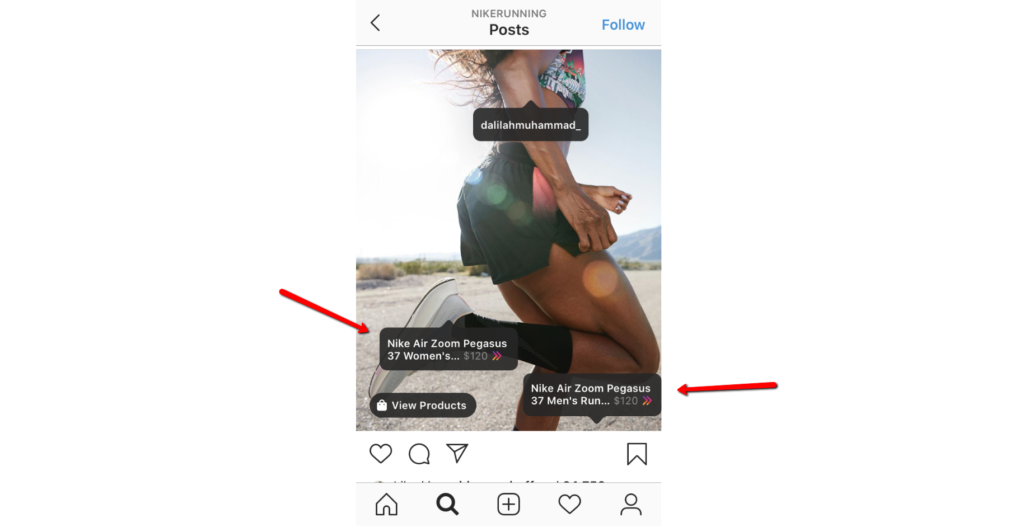
For businesses considering these types of ads, consider your long-term and short-term goals before setting up shopping ads. Because it can take time to analyze data and get a true sense of ROAS, many companies prefer to get professional ad management that can customize ad campaigns with their preferred KPIs.
In recent years a wave of businesses have moved to take advantage of Instagram’s growth. As its ad revenue has nearly doubled in just 2 years, the need for a professional marketing strategy has become self-evident. This is why many digital eCommerce brands and online businesses are looking to bring their Instagram ads in-house, or are turning to professional agencies to capitalize on the potential.
Stories Ads
According to Instagram, a third of the most viewed stories on the platform come from businesses – 1 in 5 end up getting a direct message from viewers. With 500 million accounts now using Instagram stories they represent an important opportunity for brands and digital retailers to start Instagram marketing for eCommerce.
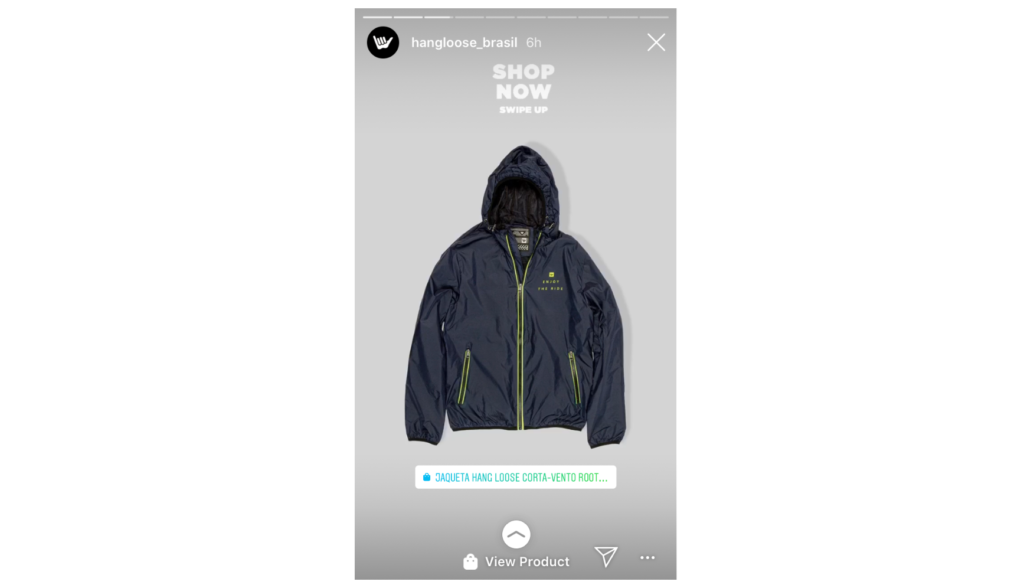
These ads are vertically oriented to match with the media style of Instagram stories themselves. They behave as a sort of interstitial that platform users will see dispersed between the Instagram stories. Similar to other Facebooked based Instagram eCommerce ad strategies they allow brands to choose an objective including goals that cater best to their specific product sales.
For these style of ads you can choose to target either website traffic or site/app conversions.
Photo Ads & Video Ads
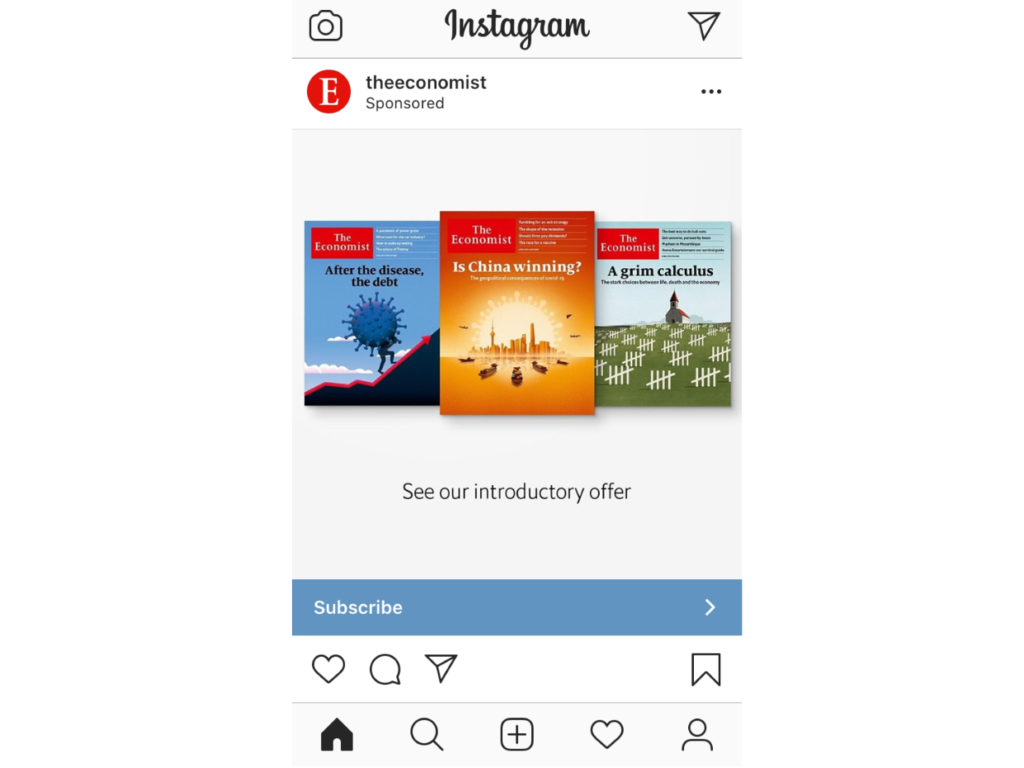
One of the most straightforward ad styles that caters to Instagram’s main format. These ads let eCommerce businesses showcase products and services through images. They also allow you to focus specifically on conversions, store traffic, brand awareness, and 7 other objectives that can help your business expend its Instagram eCommerce marketing strategy to a wider audience.
These ads are ideal for greater brand visibility and outreach. As ad impressions grow across the Facebook/Instagram network they encourage both short term, and long-term opportunities for product sales.
Photo/video ads (like Instagram’s other ad types) let businesses choose from a range of calls-to-action (CTAs) as well, including some that are suited best for product sales (“Shop Now,” “Order Now,” “Check Availability,” etc.)
One of the benefits of photo ads is that businesses can easily set up this ad strategy with their existing content. If you’re already posting product photos as part of your inbound social media presence you can still set up photo ads to extend your Instagram marketing for eCommerce conversions.
Video Ads are very similar and can be up to 1 minute long. Just like photo ads they appear in the user feeds intermittently and allow for call-to-action placement and interaction that can help businesses increase the visibility of their products.
Carousel Ads
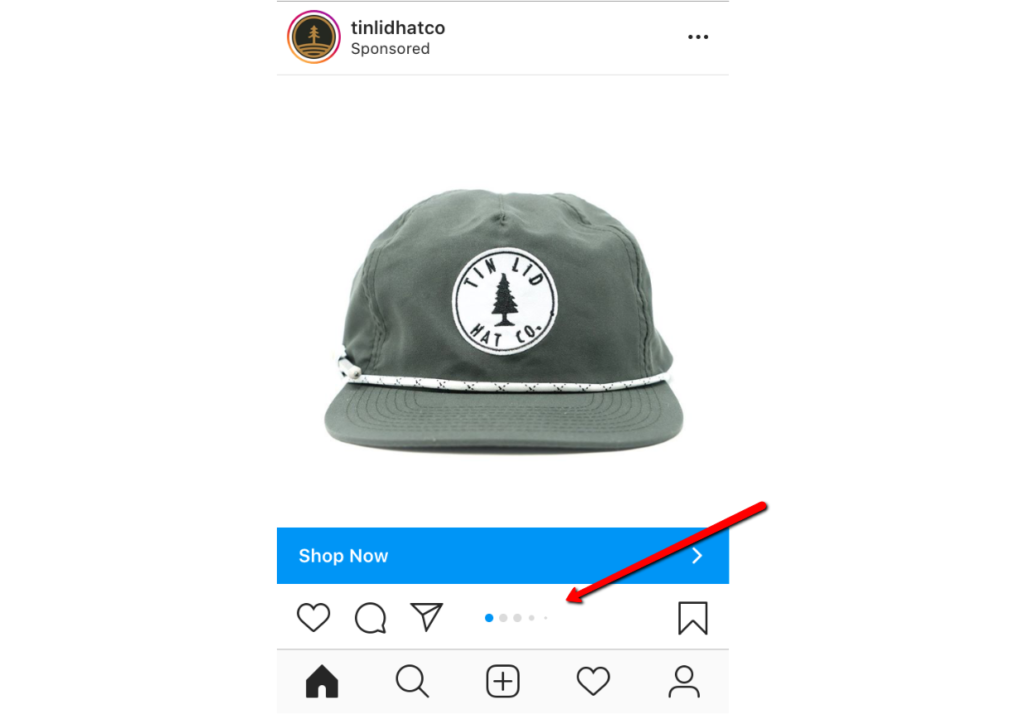
The carousel ad design allows eCommerce businesses to showcase up to 10 different images or videos within a single ad – providing a sort of album format. This format also supports videos and also includes the same options for CTAs and goals that their other ad formats offer.
The benefit of these ads is that they give marketers the option to include a sort of narrative or collected ad for their products. This style is good for extending Instagram marketing for eCommerce sellers that want to push products which go together or are available under multiple variations.
These ads can also appear directly in user feeds as well as in Instagram stories.
Collection Ads
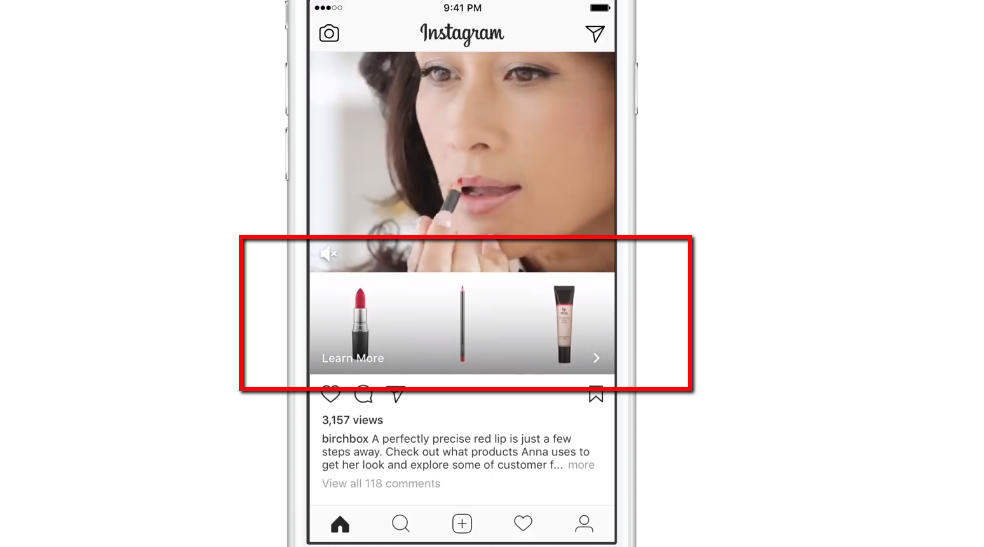
The collection ad design is an Instagram eCommerce marketing format that the social media site claims features an “instant storefront” for selling 4 or more products. These ads allow for multiple cards just like carousel ads do, but collection ads come with a different design that is meant to prominently display a hero image with a range of small additional photos.
These kinds of ads only appear in the Facebook or Instagram feed, meaning they’re a bit limited compared to the other styles. Data from Statista shows that, roughly 18% of people end up purchasing up to five products within a 6 month period as a result of marketing from Collections Ads, meaning that these kinds of ads can be valuable for Instagram eCommerce.
The big benefit with collection ads is that they provide an in-ap or on-platform display where people can purchase the products directly – instead of being referred to the business’s website.
On Instagram, Collection ad formats are different then they are on Facebook in a few ways. The Instant Storefront is the only options available for after people click on the ad, and the template on Instagram only allows business to show 3 items below hero image – as opposed to 4 on Facebook.
Explore Ads
Instagram introduced ads for the Explore feeds in 2019. Of course, this means that these ads appear on the Explore page of the Instagram platform and allow users to interact and engage with popular content and even eCommerce brands. After tapping on a photo or video in Explore, people may begin to see ads as they scroll and browse the feed.
Instagram themselves have emphasized the growing importance of the Explore feed for eCommerce saying that they intend to grow business and consumer interaction in this part of the app.
According to the company public numbers more than 50% of accounts on Instagram use Explore every month, meaning that it’s a valuable opportunity for companies to expand their eCommerce Instagram marketing methods for better ROI.
IGTV Ads
Finally there’s IGTV ads. This more long-form video section of the app is designed for more in-depth video content and also offers an opportunity for eCommerce optimization. Instagram build out this content channel with the intention of drawing in bigger, more powerful content creators who were originally bearish on Instagram because of a perceived lack of advertising opportunity.
Now these Instagram advertising tools give small online sites a chance as well.
IGTV ads offer yet another style of ad format that gives eCommerce businesses a method for expanding their visibility and increasing interaction with their products. But IGTV ads are a relatively new, with the platform monetizing this feature of the app only relatively recently.
Instagram Marketing for eCommerce, Beyond Just Ads
These ads make up the biggest opportunities for businesses looking to use Instagram strategies for their eCommerce. As Instagram continues to grow in popularity it’s potential for growing retailer and eCommerce seller performance will continue to become apparent, even as they continue to add new features. What this means is that organic and inbound presence on Instagram can now integrate with paid advertising methods as well.
Most sellers understand that having a social presence on platforms like Instagram is important for PR, brand recognitions, and user interaction – but as Instagram builds out paid ad tools from the Facebook ad network, marketers will be able to take advantage of both inbound and pay-per-click. Meaning that professional ad management will be crucial.
Something we haven’t discussed here is the Shop tab included in the Explore feed. This means that now Facebook is expanding Instagram’s eCommerce marketing potential even more.
Instagram’s Shop feature allows businesses to set up a more complex product listing on their profile. The information and products in a business’s Shop are what appear as ads throughout other areas of the application – including in the Explore tab, Stories, etc. Basically Shops let companies port their inventory of products straight to the platform where they can add them to their complete range of marketing strategies.
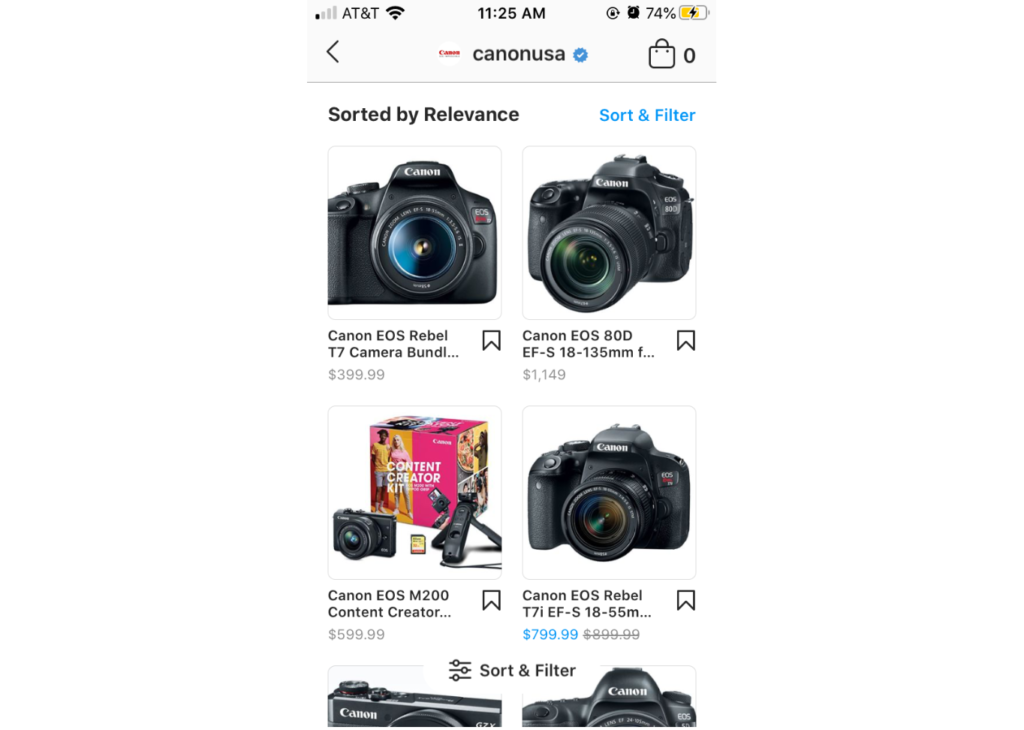
Managing ads like these across Facebook and Instagram gives businesses the opportunity to access more than 2 billion individuals. Because creating and managing new audiences off site with brand driven ad campaigns is a complex task, one strategy is to hire an agency.
Facebook Blueprint Certified agencies can offer professional agency analyst teams with resources for adjusting campaigns daily, monitoring audiences, and tailoring strategies toward a business’s specific goals. The advantage of paid media marketing companies is that they provide in-depth data reporting along with systems for A/B ad testing, consistent communication, as well as years of paid ad campaign experience.
Learn More
Contact us to learn more about Instagram marketing for eCommerce and to get more information on digital ad management. Radd Interactive’s team of Blueprint Certified analyst can offer resources for long-term social media ad growth.
